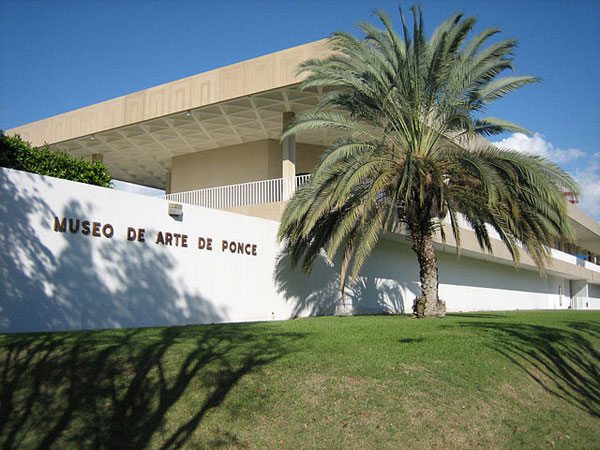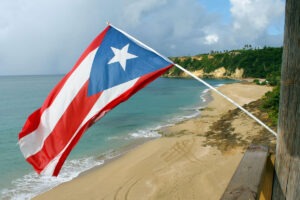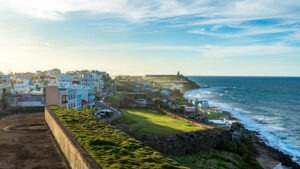
March 8, 2018; New York Times
In the immediate aftermath of Hurricane Maria, museum leaders across Puerto Rico did all they could to protect their treasures from the elements, and then from mold and mildew during the extended power outages. As reported last week in the New York Times, “Months later, they seem to have largely succeeded. Most museum buildings were spared heavy damage and, although assessments are still coming in, no widespread or lasting harm to the art has been reported.”
This is not to say all is well: Tens of millions of dollars likely will be needed to repair the damage that was done to the buildings and their grounds, and upgrades and new investments will need to be made to better prepare for future emergencies.
Among the cultural institutions that sustained damage were these:
- The Museum of Contemporary Art of Puerto Rico in San Juan had to “hack big, rectangular vents” into their own gallery walls to create cross-ventilation to fight the high temperatures and humidity until power could be restored.
- The Institute of Puerto Rican Culture, located in Old San Juan, which oversees the National Gallery, the National Archive and 30 other historic buildings and culturally significant parks, sustained an estimated $1.57 million in damages to its Spanish Colonial headquarters building, with nearly all of the 202 doors, window frames, and shutters from the 1840s, as well as wrought iron railings and brickwork, needing to be repaired. Across all of its properties, the Institute’s total insurance claim could exceed $11 million.
- Two art museums affiliated with the University of Puerto Rico were hurt by the storm: Museo Casa Roig 45 minutes south of San Juan, and the Museum of Art on the Mayagüez campus on the island’s west coast.
- The Museum of Puerto Rican Art had a broad, curving wall that was clad in copper sheets that were “peeled off” by the storm along with some of the plywood backing. The museum’s sculpture garden was particularly hard hit, with about 90 percent of the landscaping destroyed.
In many instances, the repairs to these spaces will require not just skilled laborers—who are in great demand as all of Puerto Rico continues to rebuild—but specialized artisans who can work on historic properties with “uncommon stone and brick treatments, wrought iron, carved wood, murals, glass works, mosaics and ornamental landscaping.”
Sign up for our free newsletters
Subscribe to NPQ's newsletters to have our top stories delivered directly to your inbox.
By signing up, you agree to our privacy policy and terms of use, and to receive messages from NPQ and our partners.
Who will pay for all of this work? Almost certainly not the Puerto Rican government, which was already strapped even before Maria. Insurance will cover much of the damage, and federal agencies like FEMA also have stepped in. The National Endowment for the Humanities sent $30,000 each to the Mayagüez museum and to the Museum of Contemporary Art. The Smithsonian Institution sent $110,000 to the Museum of Puerto Rican Art. “Foundations, universities and fundraising events around the United States” are also providing funds to help with restoration and even outreach. Northwestern University, for example, contributed $100,000 “to train artists working with the Museum of Contemporary Arts to reach wider audiences.”
Importantly, some of the support being channeled to Puerto Rico’s museums will do more than repair the damage from Maria. It will help the island’s arts leaders become better prepared for the next emergency, with improved processes and with generators that many of the institutions do not currently have. Marianne Ramírez Aponte is executive director of the Museum of Contemporary Art as well as president of the Association of Puerto Rican Art Museums. She notes that last year’s storm has led this group “to rethink everything about their museums and hurricanes. Many museums did not have emergency operation plans. Some did not have home addresses for staff members. Cellphones and landlines were knocked out. Gasoline and diesel fuel were scarce. The museums became isolated.”
Now, with support from the Smithsonian and FEMA, the museum leaders have begun meeting to consider what lessons they’ve learned that can help them improve emergency preparedness. In addition to new equipment, such as satellite telephones, generators, and extra fuel tanks, the groups have discussed the possibility of “emergency art storage vaults around the island.”
Of course, hurricanes and other natural (and unnatural) disasters can strike anywhere. For museum directors and leaders of other types of cultural institutions, especially those with collections to protect, having a written plan that is periodically reviewed by key staff and board members is a good practice to follow. If your cultural institution does not have such a plan—or has one but hasn’t dusted it off any time recently—what are you waiting for?—Eileen Cunniffe












